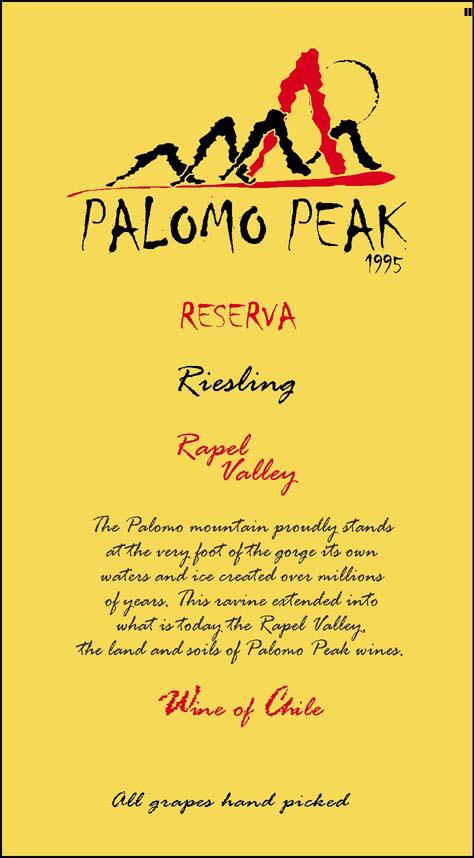1995 Rapel Valley Riesling
Palomo Peak Reserva is a stunning white Riesling hailing from the picturesque Rapel Valley, showcasing the remarkable terroir of this celebrated Chilean region. With its exquisite pale-yellow hue, this vintage delivers a delightful aroma of bright stone fruits complemented by floral notes that are simply irresistible. On the palate, it reveals a luscious body that combines a vibrant acidity, providing a mouthwatering experience that enhances its refreshing profile. The fruit intensity is prominent, showcasing ripe peaches and apricots, making it an inviting choice for wine enthusiasts. This well-balanced Riesling presents a medium dryness, ensuring it pairs beautifully with a variety of dishes, from spicy Asian cuisine to creamy cheeses. For those seeking a delightful and age-worthy wine, the Palomo Peak Reserva from 1995 is a fantastic option that exemplifies the charm of the Rapel Valley.
Palomo Peak Reserva is a stunning white Riesling hailing from the picturesque Rapel Valley, showcasing the remarkable terroir of this celebrated Chilean region. With its exquisite pale-yellow hue, this vintage delivers a delightful aroma of bright stone fruits complemented by floral notes that are simply irresistible. On the palate, it reveals a luscious body that combines a vibrant acidity, providing a mouthwatering experience that enhances its refreshing profile. The fruit intensity is prominent, showcasing ripe peaches and apricots, making it an inviting choice for wine enthusiasts. This well-balanced Riesling presents a medium dryness, ensuring it pairs beautifully with a variety of dishes, from spicy Asian cuisine to creamy cheeses. For those seeking a delightful and age-worthy wine, the Palomo Peak Reserva from 1995 is a fantastic option that exemplifies the charm of the Rapel Valley.




